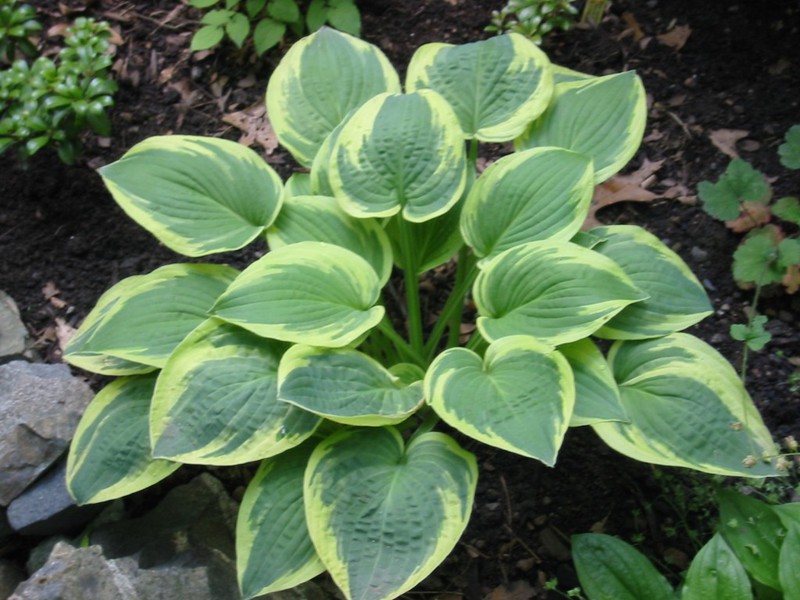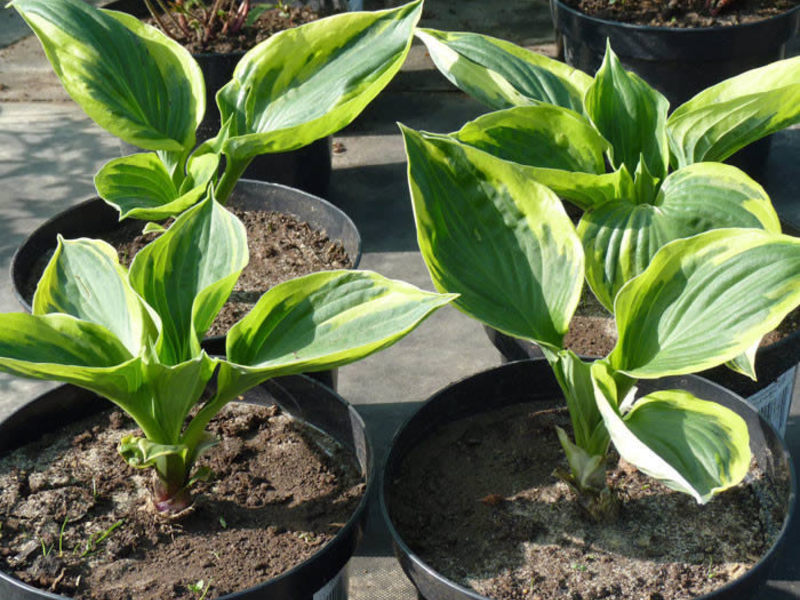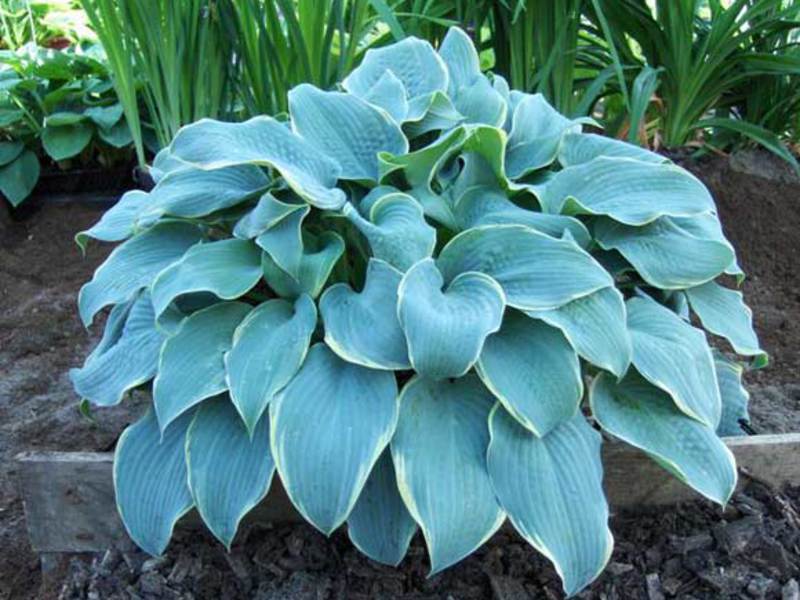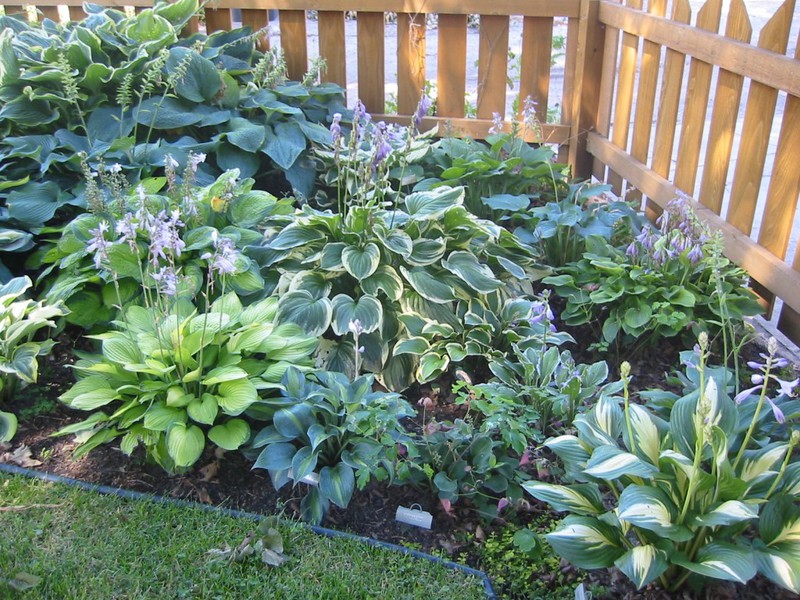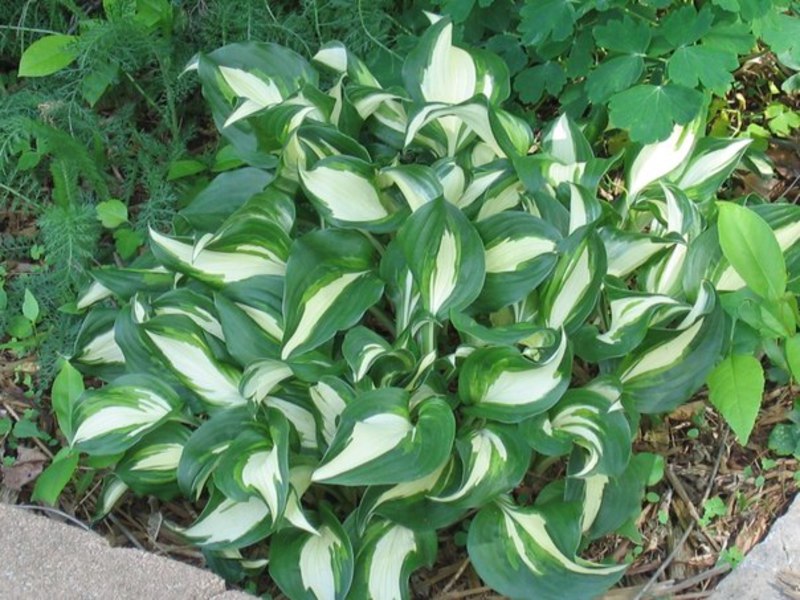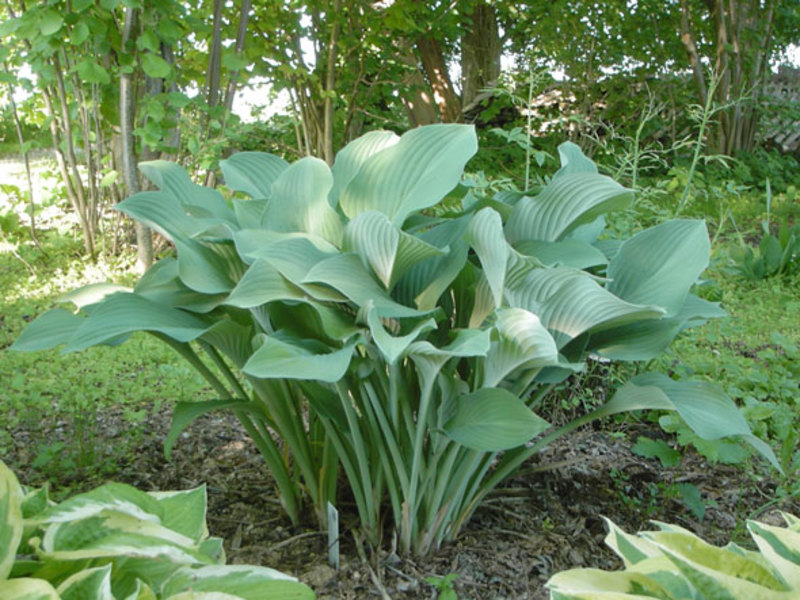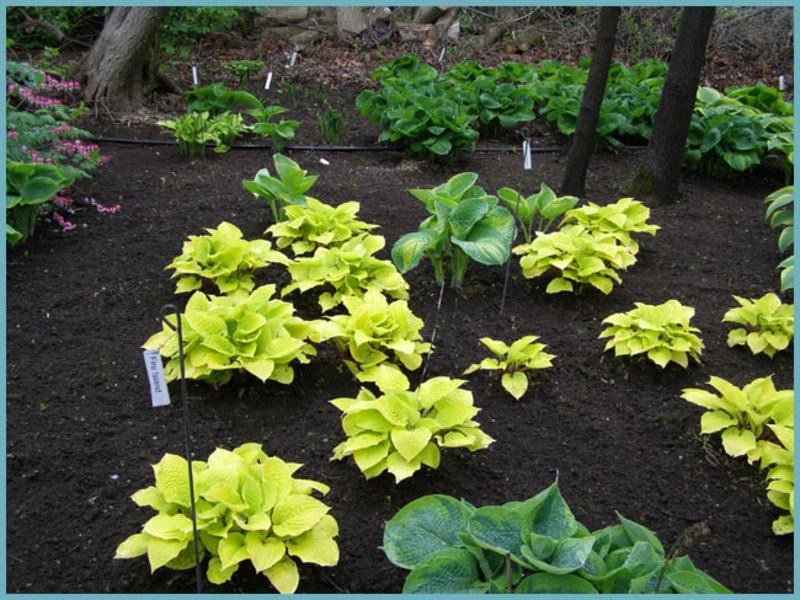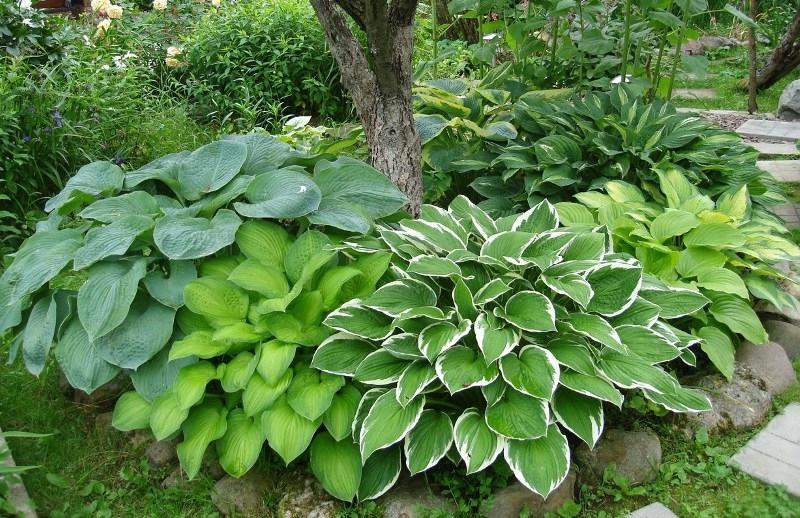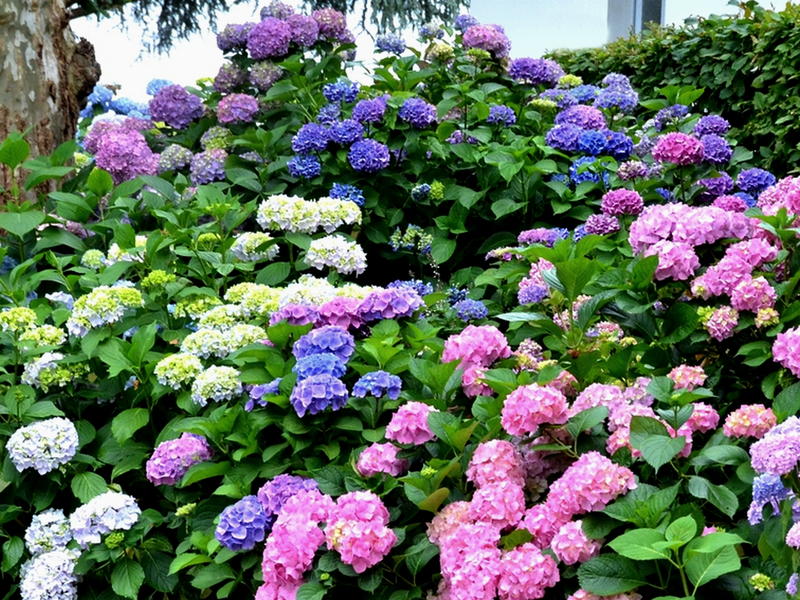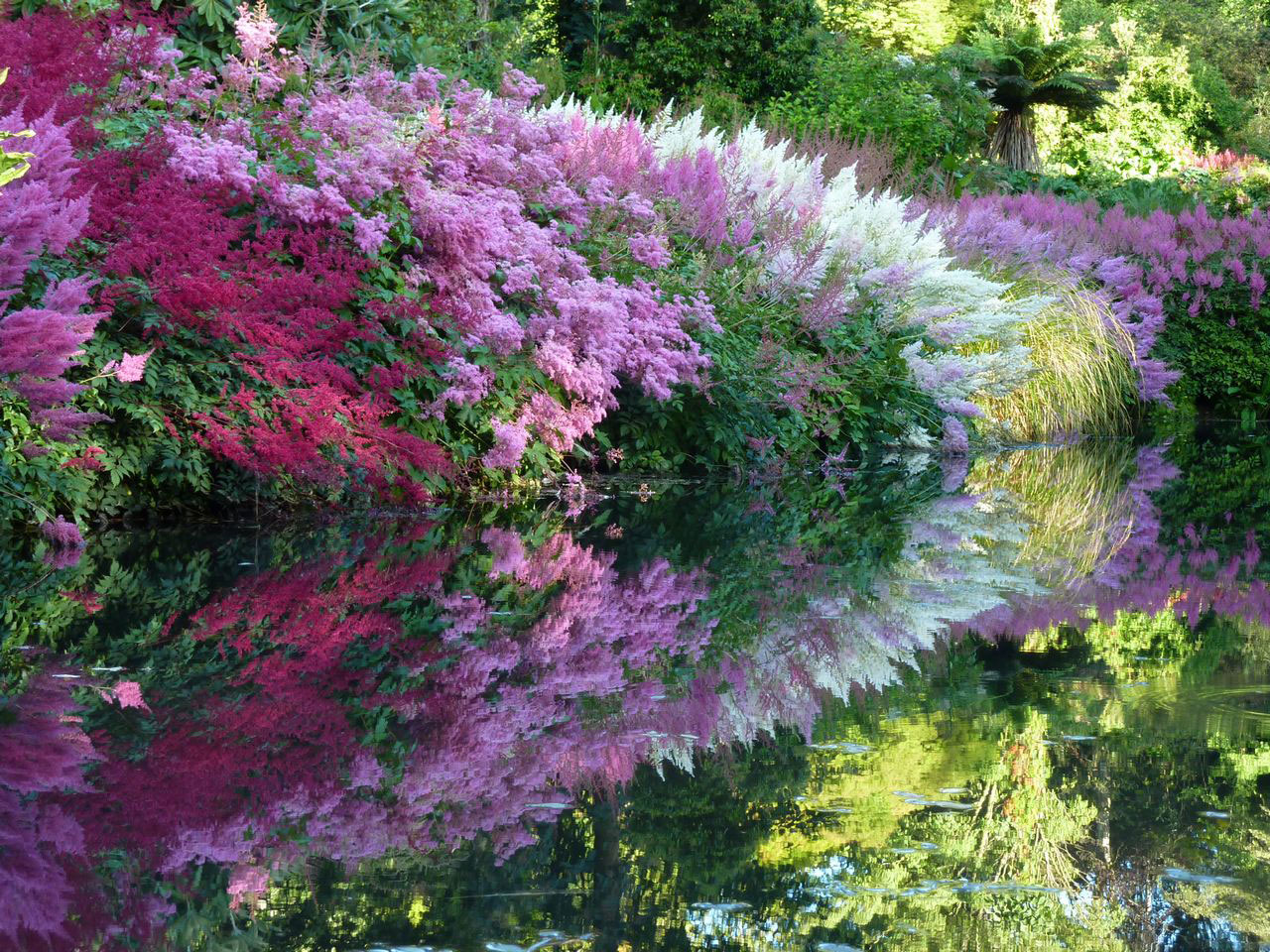Hosta is a species of herbaceous perennial plants of the asparagus group, although before that it was considered a lily family. The plant is named after the botanist N. Host. There are about 50 varieties of this flower in total. The host's historical habitat is the Kuril Islands, the Far East and Asia.
Content
Description of the hosta plant
The plant of this flower has many faces. Therefore, it will be able to fit into any garden design. This ornamental shrub can quickly grow into real plantations... The main decorative property of the hosta is its large leaves, which exist in various varieties, taking into account the type and variety of plants. Hosta is drought-resistant and frost-resistant, unpretentious and versatile, it grows well in the shade and is an excellent background for other flowers. The host reaches its maximum beauty after five years of its growth.
Despite the variety of varieties and hybrids, all these plants are herbaceous, stemless, thickened, small and short-branched roots have many filamentous processes that allow the hosts to securely anchor in the ground.
White, blue, purple and pink terry flowers of the plant are combined in brushes, beautifully rise on large peduncles. Unlike other shade-loving bushes, host flowers are truly beautiful: funnel-shaped, located in racemose one-sided inflorescences. Flower fruit presents a leather box with many seeds that remain viable for up to one year.
Host leaves, cordate, lanceolate and basal, pointed, long-petiolized, with visible veins and striking a variety of colors, are still considered their main advantage.
The colors of the leaves can vary according to the plant variety: from any shade of green, all shades of blue, to white and red. At the same time, there are also a huge variety of color combinations on one bush: strokes, blotches, lines, etc. The texture of the leaves is also striking in its variety: wrinkled, compressed, waxy, with a steel shade, matte or usual glossy. The height of the bush is approximately 60-70 cm, but there are also miniature species that are no more than 17 cm, and giants are more than 130 cm.
How to grow a host?
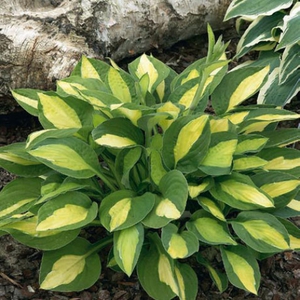 Cultivation of a host and its reproduction, possibly in the following ways:
Cultivation of a host and its reproduction, possibly in the following ways:
- using cuttings;
- seeds;
- dividing the bush.
Those who prefer growing by seeds in the open field need to know that reproduction by this method will depend on the pre-sowing preparation of raw materials with growth activators, since the germination rate of the seeds of this plant is low - 65-70%. Many gardeners recommend using method of stratification.
The next important factor of success is the sterility of the earthen mixture, where there should be no fungi and other harmful organisms, otherwise the seedlings may grow sick, therefore it is advisable to purchase the land in stores. The land must include:
- Vermiculite;
- Peat;
- Perlite.
In the middle of spring, a drainage layer is laid in a pre-treated container with alcohol or potassium permanganate, the earth is covered and thoroughly moistened. After the seeds are scattered on top, they are covered with a soil layer of 4-6 mm, slightly sealed and, to save moisture, close the container with polyethylene. In the process of germination, the temperature of the ground must be 19-24C, in this case, seedlings are formed in a month. Protect the seeds from direct sunlight, organize moderate watering, and remove condensation in a timely manner. The seeds do not need bright light, so store them in partial shade until shoots form, but then place them in a lighted place.
It is necessary to dive the seedlings into separate containers after the formation of several leaves: the seedlings are transferred to the ground, 1/4 covered with a layer of sand. To moisten the seedlings, you need to use the bottom watering: the hosta in a glass is placed in a deep container with water and stays in it until the top layer of the earth is moistened. Then the seedlings must be hardened: remove the polyethylene for a couple of hours. After 7 days, remove the cover completely, and put the host on the street for a short time on the condition that temperature not less than + 17C... Do not forget that seedlings develop rather slowly, and by and large, any host that is grown from seeds often loses its varietal characteristics.
Disembarkation hosts
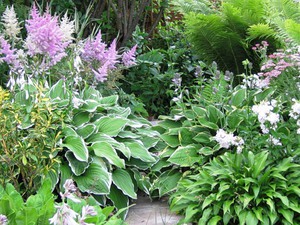 Before planting the host, it is necessary to select an area where the plant will be comfortable. Do not forget that the hosta can grow on the site for up to 20 years without transplanting, and every year it will only get prettier. The ideal place is partial shade without drafts, but keep in mind: the more colorful the leaf of the plant, the more different patterns, the more light-loving the host.
Before planting the host, it is necessary to select an area where the plant will be comfortable. Do not forget that the hosta can grow on the site for up to 20 years without transplanting, and every year it will only get prettier. The ideal place is partial shade without drafts, but keep in mind: the more colorful the leaf of the plant, the more different patterns, the more light-loving the host.
It is best for bright hosts to grow in an area where there is shade at noon and sun in the evening. Blue views it is necessary to plant only in the shade, they have enough sun a day. The larger the shade, the longer the plant grows, but the larger the leaves and hosta.
Plants need soil rich in minerals, moist, with excellent drainage, slightly acidic or neutral. Only loam and sand does not like shrubs. It is advisable to prepare the ground for planting in the spring, even in autumn: spread organic additives over the selected area with a layer of 12 cm and dig up the ground to a depth of "bayonet". By spring, the land will be ready for landing. The landing of hosts in the ground is carried out when the threat of frost passes.
How to drop off the host?
Seedling holes are made with a distance of 40-50 cm, taking into account the plant variety. For large bushes the distance is chosen 70-90 cm... If you plant seedlings from pots in the ground, then water them a couple of hours before planting. If you combine the planting with the division of the bushes, then remove the dried, rotten or deformed roots from the divisions. Seedlings are placed in the pits from a pot with an earthen lump a few centimeters below the ground level, the hosta roots are leveled, sprinkled with earth, tamped and watered well. The area near the root system is mulched with ground bark.
Hosta care
 When the hosta is in fertile soil, then you can not feed it for 3-4 years. The main bait for plants is manure and humus, they are added in the fall in the form of mulch. You should not get carried away with mineral additives, but if you think that they are required when leaving, pour granular additives near the host after watering. Liquid additives hosts are fed every 14 days August, and then stop, otherwise the bush will continue to grow leaves and will not be able to prepare for wintering.
When the hosta is in fertile soil, then you can not feed it for 3-4 years. The main bait for plants is manure and humus, they are added in the fall in the form of mulch. You should not get carried away with mineral additives, but if you think that they are required when leaving, pour granular additives near the host after watering. Liquid additives hosts are fed every 14 days August, and then stop, otherwise the bush will continue to grow leaves and will not be able to prepare for wintering.
The land near the bushes must be constantly moistened, especially near young plants, therefore it is necessary to water the flowers in a timely manner, while watering is done under the rhizome, and not on the foliage, which rots from water. In addition, after planting and when leaving, the jet should be weak so that the earth does not ram, but can absorb water as deeply as possible. A signal that there is not enough water in the host is the darkening of the edges of the leaves.
If you want the bush to look neat, then you will need to break out new peduncles, otherwise the plant will "fall apart" after flowering.It is necessary to weed and loosen the soil only in the first stages, when the bush grows, the weed is no longer afraid of it. 3-4 years later the bush needs to be dividedas it will grow significantly. Dig up the plant and remove young shoots from the main root.
Diseases of hosts
The hosts are unpretentious, but gardeners say that the more species of this shrub you have in your collection, the greater the chance of getting an infected shrub. Plants that are often weak or strongly cooled by spring frosts are infected with the following diseases:
- Phylosticosis is a fungal infection that manifests itself in the form of yellowish merging blotches on the leaves.
- Sclerotinia is a fungus that negatively affects the root system.
- Gray rot - infects leaves.
These diseases removed by fungicides and dichlorane.
Insects
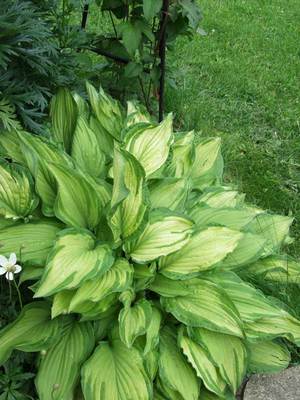 The main pest of hosts is a slug. A sign that the plant has attracted these pests is huge holes in the foliage. Fighting slugs is very easy: place containers with beer near the host, and the next day, walk around and collect the pests that have crawled onto the bait.
The main pest of hosts is a slug. A sign that the plant has attracted these pests is huge holes in the foliage. Fighting slugs is very easy: place containers with beer near the host, and the next day, walk around and collect the pests that have crawled onto the bait.
In addition to slugs, nematodes are not indifferent to this plant. Signs of their life can be identified by visible yellow spots spreading between leaf veins. Identify nematodes A simple test can help: put finely chopped hosta leaves in a plastic cup, add water and leave for 30 minutes, and then examine the contents under the light. If nematodes are present, you will see worms floating in the water. It will not be possible to remove nematodes, since no drugs will destroy the eggs of the worm, and they will again give new offspring. Bushes will need to be destroyed within a radius of several meters from the infected hosts.
Caterpillars have a danger, appearing unexpectedly, they can completely destroy the bush overnight, as well as various bugs, after which the leaves look like Dutch cheese. Only insecticides can remove insects.
Hosts after flowering
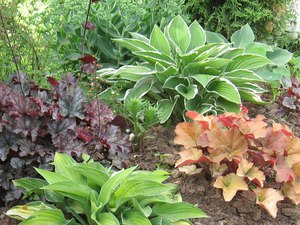 Then when the flowers wither peduncles need to be removed... At the beginning of autumn, the plants are prepared for dormancy. At the same time, you need to plant the bushes. First, 30 minutes before planting, you must thoroughly water the area where you will need to work. Then the bushes are dug up and separated so that all parts have at least one deciduous rosette. They are planted with a distance of 20-30 cm between themselves, digging in to the same depth at which the plant was originally.
Then when the flowers wither peduncles need to be removed... At the beginning of autumn, the plants are prepared for dormancy. At the same time, you need to plant the bushes. First, 30 minutes before planting, you must thoroughly water the area where you will need to work. Then the bushes are dug up and separated so that all parts have at least one deciduous rosette. They are planted with a distance of 20-30 cm between themselves, digging in to the same depth at which the plant was originally.
The host's root system grows horizontally, so the holes need to be made wide before planting. After planting, the plants must first be watered abundantly. It is necessary to complete the separation and planting of the host before the beginning of October, so that new plants have time to take root before the arrival of the autumn frosts. To take root, new hosts will one month needed... With the onset of spring, these "splittings" will grow rather quickly: after a few years they will be full-grown and full-fledged bushes.
In the fall, they carry out work on warming the territory. Why a place with hosts is mulched with leaf humus. Moreover, it is necessary for the plants that are under the trees: due to the mulch, the pieces will not have a lack of nutrients that are absorbed by the roots of the tree. In addition, mulch raises the level of the flower bed, which improves the drainage system.
Hosta is a long-lived, colorful and undemanding plant for "lazy" flower growers. There are no difficulties in breeding and growing hosts from seeds. Cultivating hosts in this way, it is an opportunity to organize the original decor of the personal plot with your own hands.
